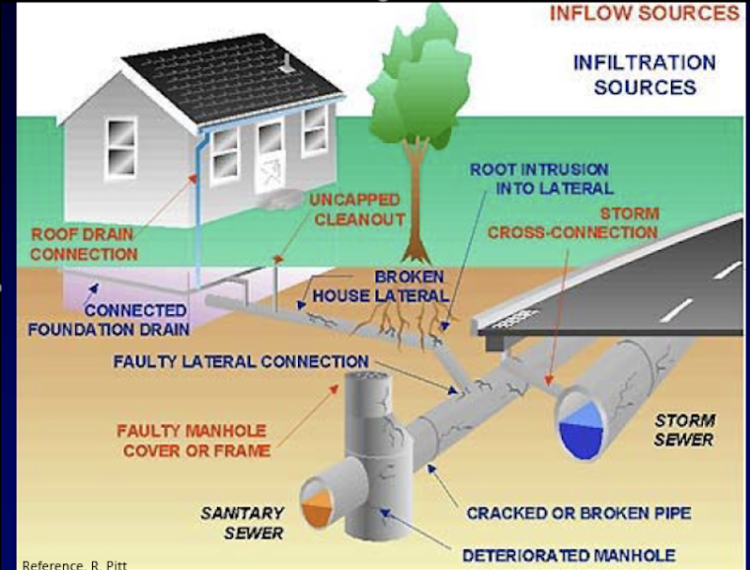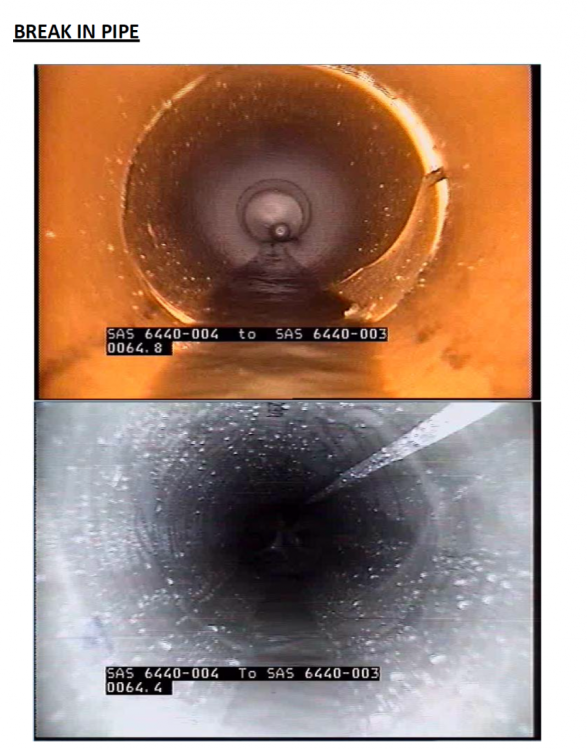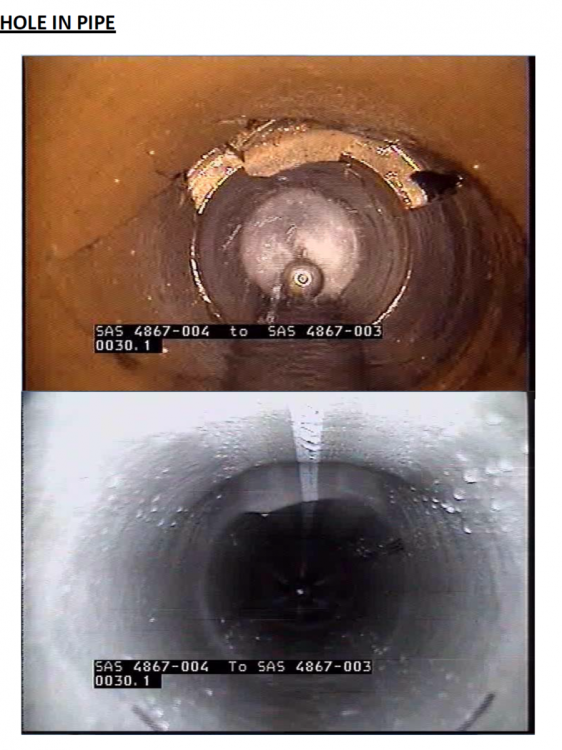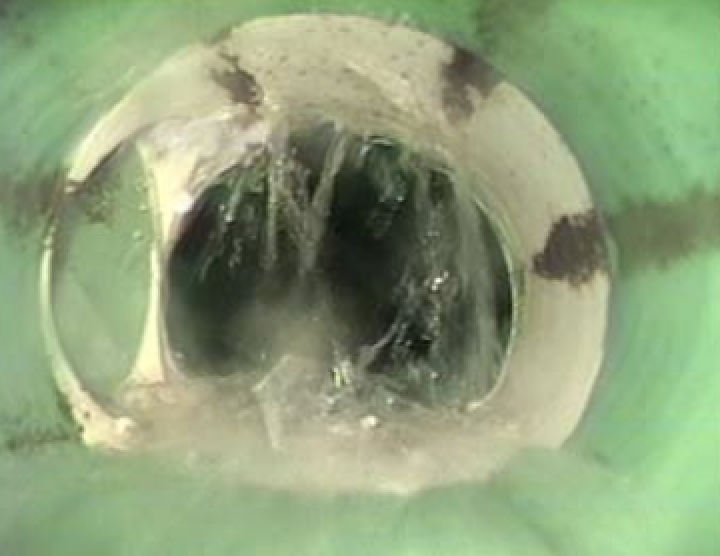
I and I Program


Infiltration is clearwater that enters into sanitary sewer system through defects in the sewer mains or manhole structures. These defects include cracks, fractures, breaks, or faulty pipe joints that create an opening for groundwater to enter the sewer system.
The I & I program allows the Sewer Utility to identify areas in the system susceptible to I & I and the ability to fix the problem. Closed-circuit television (CCTV) pipe surveys, pump station run times, and I & I studies are used to determine where I & I is entering the system. Once areas of I & I are identified, rehabilitation projects are scheduled to address the issue. The City uses traditional reconstruction methods to replace the sewer, along with trenchless technologies to line sewer mains (Cured-In-Place-Pipe (CIPP) lining) and sewer structure lining, to stop I & I from entering the sewer system.
Cured In Place Pipe (CIPP) is the trenchless technology that the City uses to upgrade the sewer mains without opening up street. CIPP installs a liner inside of the sewer main. It is very cost effective, approximately 15 percent of the cost of open cut sewer replacement. The City extensively uses this type of construction to address I & I and installs liners in approximately eight miles of City sewers per year.
I & I Prevention Importance
City Sewer Capacity
The City sanitary sewers are sized to only handle wastewater. The City storm and sanitary sewers are separate systems. Clearwater (rain, groundwater) entering the sanitary sewer system will potentially result in overwhelming the City sanitary sewer system resulting in costly sanitary sewer backups into homes or sanitary sewer overflows (SSO) into the area lakes and streams.

Exposure to untreated wastewater is harmful to human health and the environment.
Cost of Treatment
The City of Madison Sewer Utility does not have a wastewater treatment facility of its own. Instead, all of the City’s wastewater drains to the Madison Metropolitan Sewerage District’s (MMSD) treatment facility located on the south side of Madison near Lake Waubesa. MMSD charges wastewater treatment fees based upon the volume of wastewater that they receive from each municipality. This means that by preventing clearwater from entering the sewer system and reducing the volume of flow going to the MMSD treatment plant facility, the fees charged by sewer utility to our customers on monthly bills are also lower.
Do Your Part To Help
Check Your Sump Pump
Please check your sump pump to make sure that it discharges to your yard. Sump connections that drain to your floor drain end up in City sanitary sewer. This is clean groundwater that does not need to be treated. Sump pump connections should be discharged to your lawn or a pipe out to the street.
Check Your Gutters
Roof drains that connect to sewer laterals result in rainwater and snow melt entering the City sanitary sewer. Downspouts from gutters need to be drain to your lawn or the street.

If you believe you have clearwater connection to the sanitary sewer, contact your plumber. Fixing this issue can save you from potential wastewater backups into your basement.